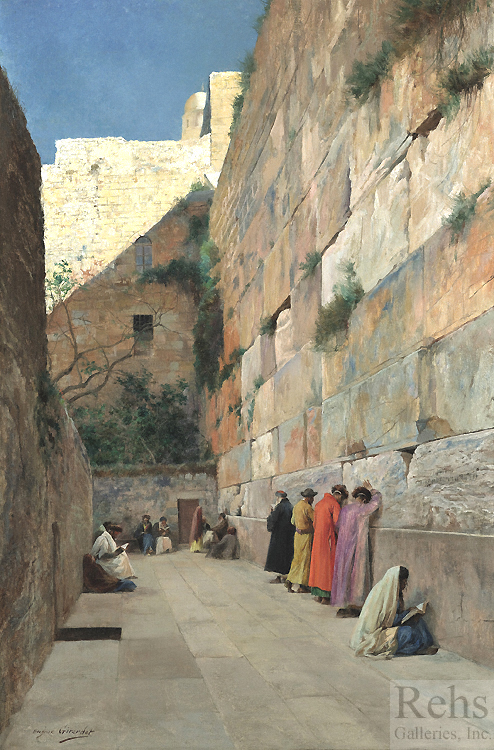|
The Wailing Wall
EUGENE ALEXIS GIRARDET
(1853 - 1907)
The Wailing Wall
Oil on canvas
28 3/4 x 19 inches
Signed
Eugène-Alexis Girardet was born in Paris on 31 May 1853 into a family whose livelihood had long been based on painting, engraving and lithography. All of his uncles, cousins and brothers—as well as several previous generations of Girardets—were engaged in either printmaking or painting. Girardet no doubt had a paintbrush tucked into his hands at a very tender age, and as a result, he emerged as a precociously talented artist who began selling his work shortly after his seventeenth birthday in 1870.
Fortunately, Girardet was also able to obtain more formal education at the Ecole des Beaux-Arts under the direction of Jean-Léon Gérôme, whose paintings of Middle Eastern scenes fascinated him. Following in his mentor’s footsteps, Girardet made his first trip to Spain and Morocco in 1874, searching out landscapes that offered him a fresh visual touchstone and introduced him to the customs of a new culture. At this point in time, his paintings remain anchored in the prevailing academic realism of his education. In an early work such as Café Arabe, Girardet has depicted an anonymous waiter preparing coffee in a carefully delineated interior space. The color palette consists entirely of monochromatic shades of brown, white and dusty gold—very like the Realist palettes of Girardet’s Paris colleagues; and the subject matter is clearly in line with Realist ideals of depicting ordinary people going about their daily life. This will change quickly, however, as Girardet falls under the spell of the colors and textures of North African fabrics. At The Souk, for example, illustrates the same sandy colored setting as in Café Arabe, but with the addition of brilliant reds, blues and greens in the garments of the women and an astonishing collection of richly textured fabrics piled into the lower right corner of the painting.
During the late 1870s and 1880s, Girardet redefines his imagery in a number of ways. First and foremost was the influence of his trip to Algeria and Tunisia in 1877 beginning with the typical itinerary in Algiers and Boghari in the northern part of the country. Like many artists before him, Girardet was eager to see the exotic cities and oases of North Africa, probably projecting a romanticized image of date palms waving in the desert sunset. His 1879 painting, Camel Train by an Oasis at Dawn, speaks to this sensibility with its stark silhouettes of camels and traders against the lemon and pink dawn sky. Such idealized notions, however, were overwhelmed by what Girardet perceived as the modernization of these French colonial cities. His desire to seek out non-western cultures that were untouched by European colonialism was similar to that which lured so many painters to Brittany looking for a part of France that had not been inundated with Parisian influences.
Girardet’s quest took him far south into the fringes of the Saharan oases, Al Kantarra and Bou-Saada. There he met Etienne Dinet, a French painter who had opted to live in Bou-Saada for at least six months out of every year. Dinet is a key figure in the history of French Orientalism, in part because he did explore—and paint—the far reaches of the Saharan landscape, and in part because he converted to Islam after many years of living in the Muslim communities of Algeria. Grirardet’s meeting with Dinet in 1877 was also to have a profound effect on how he conceived of his work. The academic realism and narrative content of his earlier painting gradually evolves into what might be described as a more ethnographic attitude towards the subject matter. Like Dinet, Girardet attempts to capture the images of North Africa accurately, emphasizing what he sees rather than what his academic training has taught him that he should see. Shoemakers Children of 1884 is a case in point. The setting is a modest workshop with the cobbler seated at his bench as he focuses on the task at hand. His children sit on a low stone bench in front of the workshop, looking rather bored as they stare into space while their father toils at his chosen craft. This is not a sentimental image, nor is it a precise anthropological illustration; instead it is a detached depiction of daily activity in an Arab family, painted in a loose naturalistic style.
Back in Paris later in 1877, Girardet and thirteen other artists formed a new organization called the Société des Peintres Orientalistes Français (Society of French Orientalist Painters) for artists who specialized in this ever-increasing genre of painting. Members included Dinet as well as Paul Leroy and Arthur Chassériau; Jean-Léon Gérôme and Benjamin-Constant were included as honorary presidents, while Léonce Bénédite, curator at the Musée du Luxembourg, was the functional president of the group. This organization would become Girardet’s primary exhibition venue in France, although he also showed his work at the Paris Salon from 1878-1880. In 1890, he joined the Société Nationale des Beaux- Arts, the splinter group that permitted all artists to exhibit their work. Outside of France, Girardet also exhibited his work in galleries in London, Geneva, Munich and Berlin. In 1906, his work was also included in the Colonial Exposition in Marseilles, although the Bedouin culture that had fascinated Girardet’s generation was now being upstaged by Cambodian dancers and firewalkers from French Polynesia.
Throughout the last two decades of the nineteenth century, Girardet continued his journeys to North Africa and the Middle East. In 1898, he traveled to Egypt and Palestine, painting numerous scenes of Cairo and Jerusalem. Stylistically his work showed increasing influence from the Impressionists with looser brushwork and growing attention to dappled and sparkling light effects. One especially charming image, atypical for Girardet, is an 1894 painting entitled Souvenir de l’été [Summer Memory] that depicts the now bespectacled and middle-aged artist peering at his portable easel in a French meadow while a beautiful young woman sketches quietly beside him. This is clearly a man who doesn’t take himself too seriously and who knows how to laugh at himself. Though the identity of the young woman is unknown, it would seem likely that she is either his daughter or one of his many nieces—and a sure sign that the Girardet family tradition of painting will continue into the next generation. Eugène Girardet died on 31 October 1907 in Paris.
Janet Whitmore, Ph.D.
Selected museum collections:
Dahesh Museum, New York City
Fine Arts Museums of San Francisco
Musée d’art et d’histoire, Geneva, Switzerland
Musée des Beaux-Arts, La Rochelle
Musée des Beaux-Arts, Nantes
Musée des Beaux-Arts, Troyes
Musée d’Orsay, Paris |
|
|
INDEX - A VISUAL HISTORY
>
<
|
|
Virtual Exhibition Index
|
next
prev
|
 AIRY, ANNA (1882 - 1964)The Little Mirror AIRY, ANNA (1882 - 1964)The Little Mirror |
 BARBER, CHARLES BURTON (1845 - 1894)Off to School BARBER, CHARLES BURTON (1845 - 1894)Off to School |
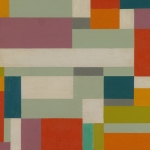 BOLOTOWSKY, ILYA (1907 - 1981)Abstract BOLOTOWSKY, ILYA (1907 - 1981)Abstract |
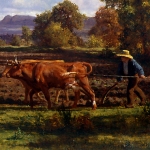 BONHEUR, AUGUSTE (1824 - 1884)Ploughing in the Nivernais BONHEUR, AUGUSTE (1824 - 1884)Ploughing in the Nivernais |
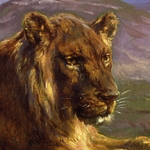 BONHEUR, ROSA (1822 - 1899)Couching Lion BONHEUR, ROSA (1822 - 1899)Couching Lion |
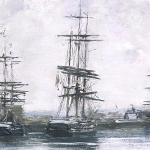 BOUDIN, EUGENE LOUIS (1824 - 1898)La bassin, Deauville BOUDIN, EUGENE LOUIS (1824 - 1898)La bassin, Deauville |
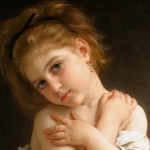 BOUGUEREAU, WILLIAM A. (1825 - 1905)La Frileuse BOUGUEREAU, WILLIAM A. (1825 - 1905)La Frileuse |
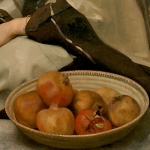 BOUGUEREAU, WILLIAM A. (1825 - 1905)Marchande de grenades (Pomegranate Seller) BOUGUEREAU, WILLIAM A. (1825 - 1905)Marchande de grenades (Pomegranate Seller) |
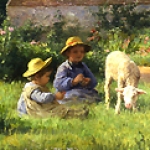 CHAIGNEAU, JEAN F. (1830 - 1906)Le Jardin de l'Artiste CHAIGNEAU, JEAN F. (1830 - 1906)Le Jardin de l'Artiste |
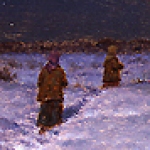 CHOULTSE, IVAN F. (b.1877)Nuit de Mars, Russie CHOULTSE, IVAN F. (b.1877)Nuit de Mars, Russie |
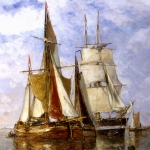 CLAYS, PAUL JEAN (1819 - 1900)Shipping on the Scheldt CLAYS, PAUL JEAN (1819 - 1900)Shipping on the Scheldt |
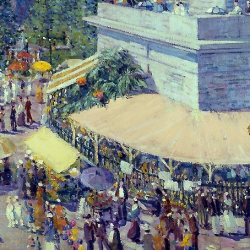 COALE, GRIFFITH BAILEY (1890 - 1950)The Baltimore Flower Mart - 1915 COALE, GRIFFITH BAILEY (1890 - 1950)The Baltimore Flower Mart - 1915 |
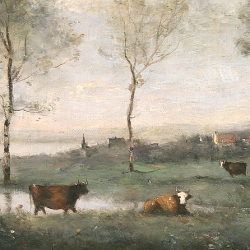 COROT, JEAN-BAPTISTE-CAMILLE (1796 - 1875)Pâturage dans les marais (Souvenir des environs d'Amiens) COROT, JEAN-BAPTISTE-CAMILLE (1796 - 1875)Pâturage dans les marais (Souvenir des environs d'Amiens) |
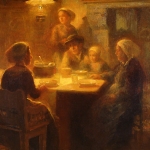 CORTÈS, EDOUARD LEON (1882 - 1969)The Breton Family CORTÈS, EDOUARD LEON (1882 - 1969)The Breton Family |
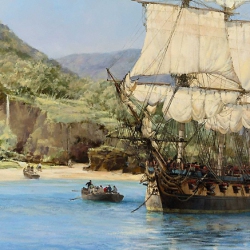 DAWSON, MONTAGUE (1895 - 1973)The Pirate's Cove, Wafer Bay, Cocos Island DAWSON, MONTAGUE (1895 - 1973)The Pirate's Cove, Wafer Bay, Cocos Island |
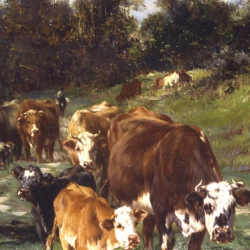 DIÉTERLE, MARIE (1856 - 1935)Troupeau dans un chemin creux DIÉTERLE, MARIE (1856 - 1935)Troupeau dans un chemin creux |
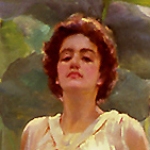 DRUMMOND, ARTHUR (1871 - 1951)Victorian Fantasy DRUMMOND, ARTHUR (1871 - 1951)Victorian Fantasy |
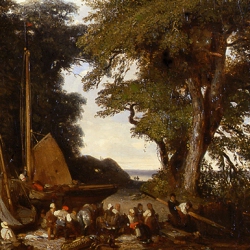 DUPRÉ, JULES (1811 - 1889)Environs de Plymouth DUPRÉ, JULES (1811 - 1889)Environs de Plymouth |
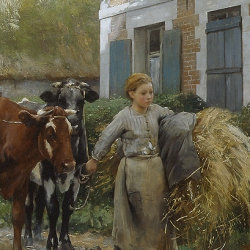 DUPRÉ, JULIEN (1851 - 1910)La rentrée au village DUPRÉ, JULIEN (1851 - 1910)La rentrée au village |
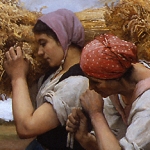 DUPRE, JULIEN (1851 - 1910)Glaneuses DUPRE, JULIEN (1851 - 1910)Glaneuses |
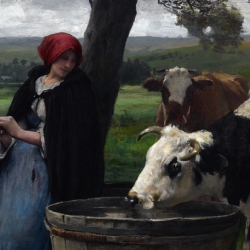 DUPRE, JULIEN (1851 - 1910)La Prairie DUPRE, JULIEN (1851 - 1910)La Prairie |
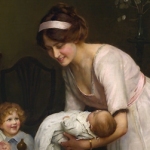 ELSLEY, ARTHUR J. (1860 - 1952)Good Night ELSLEY, ARTHUR J. (1860 - 1952)Good Night |
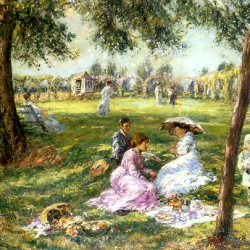 FISHER, R.A., WILLIAM MARK (1841-1923)In the Garden FISHER, R.A., WILLIAM MARK (1841-1923)In the Garden |
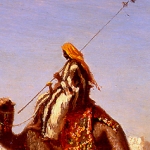 FRERE, CHARLES THEODORE (1814 - 1888)A Caravan Crossing the Desert FRERE, CHARLES THEODORE (1814 - 1888)A Caravan Crossing the Desert |
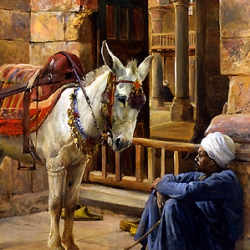 GIRARDET, EUGENE ALEXIS (1853 - 1907)Outside the Mosque GIRARDET, EUGENE ALEXIS (1853 - 1907)Outside the Mosque |
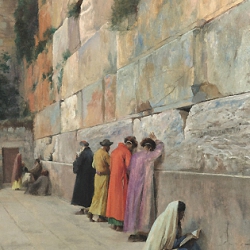 GIRARDET, EUGENE ALEXIS (1853 - 1907)The Wailing Wall GIRARDET, EUGENE ALEXIS (1853 - 1907)The Wailing Wall |
 HERBO, LEON (1850 - 1907)La Charmeuse HERBO, LEON (1850 - 1907)La Charmeuse |
 ISRAELS, ISAAC (1865 - 1934)Dancing at the Moulin de la Galette ISRAELS, ISAAC (1865 - 1934)Dancing at the Moulin de la Galette |
 JOUBERT, LEON (fl.1883 - 1900)Un Coin de Seine a Lavacourt JOUBERT, LEON (fl.1883 - 1900)Un Coin de Seine a Lavacourt |
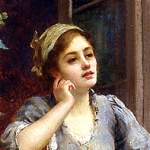 KNIGHT, DANIEL RIDGWAY (1839 - 1924)A Pensive Moment KNIGHT, DANIEL RIDGWAY (1839 - 1924)A Pensive Moment |
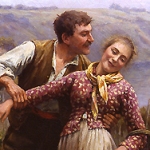 KNIGHT, DANIEL RIDGWAY (1839 - 1924)En Vendanges KNIGHT, DANIEL RIDGWAY (1839 - 1924)En Vendanges |
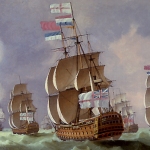 LUNY, THOMAS (1759 - 1837)Engagement Between Sir George Brydges Rodney and the Spanish Squadron, Commanded by Don Juan de Langara, Near Cape St. Vincent, January 16, 1780 LUNY, THOMAS (1759 - 1837)Engagement Between Sir George Brydges Rodney and the Spanish Squadron, Commanded by Don Juan de Langara, Near Cape St. Vincent, January 16, 1780 |
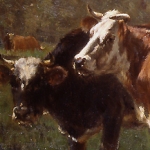 MARCKE DE LUMMEN, EMILE VAN (1827 - 1890)Vaches a Pâture MARCKE DE LUMMEN, EMILE VAN (1827 - 1890)Vaches a Pâture |
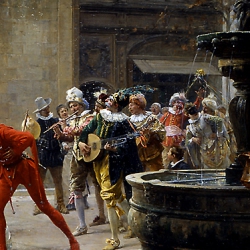 MOREAU, ADRIEN (1843-1906)Une Mascarade au XVII Siecle MOREAU, ADRIEN (1843-1906)Une Mascarade au XVII Siecle |
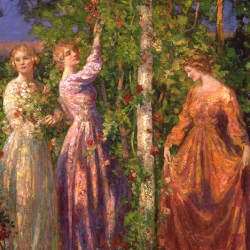 MOSTYN, TOM (1864 - 1930)Gather Ye Rosebuds While Ye May MOSTYN, TOM (1864 - 1930)Gather Ye Rosebuds While Ye May |
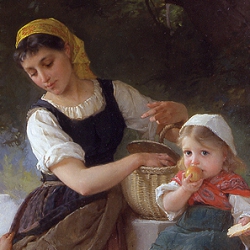 MUNIER, EMILE (1840 - 1895)May I Have One Too MUNIER, EMILE (1840 - 1895)May I Have One Too |
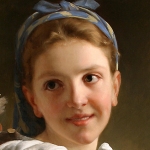 MUNIER, EMILE (1840 - 1895)La retour du marché MUNIER, EMILE (1840 - 1895)La retour du marché |
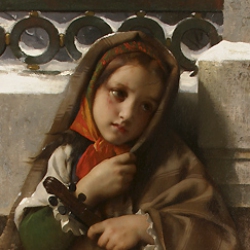 PERRAULT, LEON J.B. (1832 - 1908)Away From Home PERRAULT, LEON J.B. (1832 - 1908)Away From Home |
 PERRAULT, LEON J.B. (1832 - 1908)Sleeping Putto PERRAULT, LEON J.B. (1832 - 1908)Sleeping Putto |
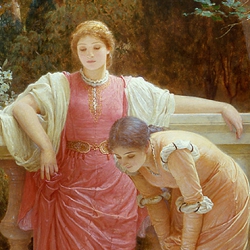 PERUGINI
, CHARLES EDWARD (1839-1918)The Green Lizard PERUGINI
, CHARLES EDWARD (1839-1918)The Green Lizard |
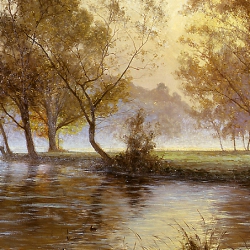 RIGOLOT, ALBERT GABRIEL (1862 - 1932)Soleil Levant dans la Brume RIGOLOT, ALBERT GABRIEL (1862 - 1932)Soleil Levant dans la Brume |
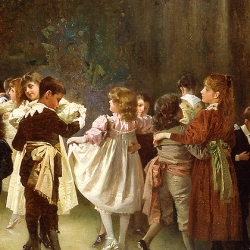 ROSSI, ALEXANDER MARK (FL.1870 - 1903)
May I Have This Dance? ROSSI, ALEXANDER MARK (FL.1870 - 1903)
May I Have This Dance? |
 ROSSI, ALEXANDER MARK (FL.1870 - 1903)Forbidden Books ROSSI, ALEXANDER MARK (FL.1870 - 1903)Forbidden Books |
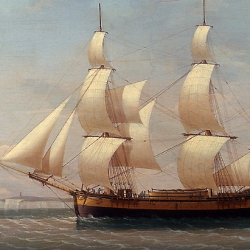 SALMON, ROBERT (1775 - c.1845)
The Estridge off Dover SALMON, ROBERT (1775 - c.1845)
The Estridge off Dover |
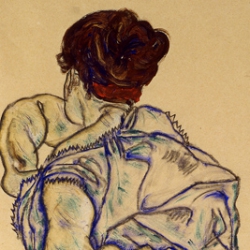 SCHIELE, EGON (1890 - 1918)Semi-nude with Green Stockings from the Back SCHIELE, EGON (1890 - 1918)Semi-nude with Green Stockings from the Back |
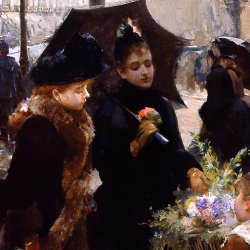 SCHRYVER, LOUIS MARIE DE (1862 - 1942)Après l’averse; - place du Théâtre-Français SCHRYVER, LOUIS MARIE DE (1862 - 1942)Après l’averse; - place du Théâtre-Français |
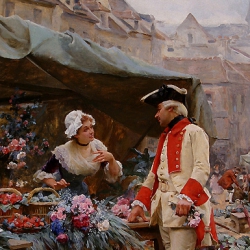 SCHRYVER, LOUIS MARIE DE (1862 - 1942)A Young Man's Fancy SCHRYVER, LOUIS MARIE DE (1862 - 1942)A Young Man's Fancy |
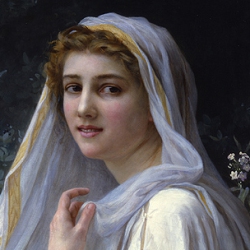 SEIGNAC, GUILLAUME (1870 - 1924)Reflections SEIGNAC, GUILLAUME (1870 - 1924)Reflections |
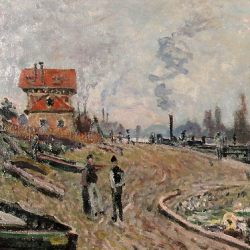 SISLEY, ALFRED (1839 - 1899)La Seine à Suresnes SISLEY, ALFRED (1839 - 1899)La Seine à Suresnes |
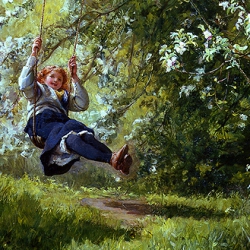 TOPHAM, FRANCIS W.W. (1838 - 1924)Young Girl on a Swing TOPHAM, FRANCIS W.W. (1838 - 1924)Young Girl on a Swing |
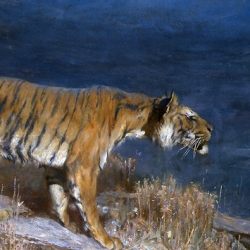 WARDLE, ARTHUR (1864 – 1949)The Deer-Stealer WARDLE, ARTHUR (1864 – 1949)The Deer-Stealer |
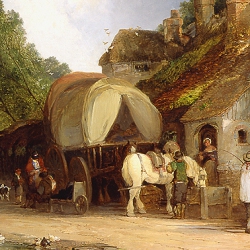 WILLIAMS, EDWARD CHARLES (1807 - 1881)The Old Roadside Inn WILLIAMS, EDWARD CHARLES (1807 - 1881)The Old Roadside Inn |
|
|
